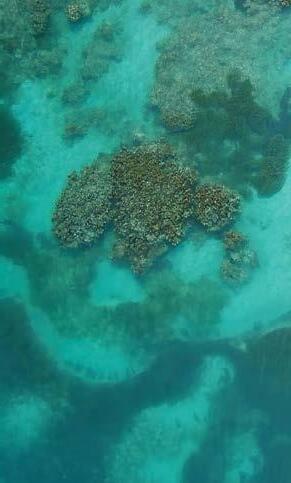
3 minute read
An oasis of biodiversity
When you think of Barbuda, chances are you’ll envision one of the mesmerising pink-sand beaches that Barbuda is so famed for. Formed by the crushed red shells of microscopic marine animals inhabiting the coral reefs off the coast, the beaches are undeniably incredible. But Barbuda’s coastline is far more than a picture-perfect paradise; it plays a crucial role as a thriving ecosystem. Beneath the crystalline waters, a rich and diverse marine ecosystem is teeming with a wealth of aquatic life and an abundance of vibrant corals. The beaches serve as vital nesting grounds for endangered species such as the hawksbill and the giant leatherback turtle. As a critical habitat for these majestic creatures, the island’s coastline faces increasing threats from ongoing development.
Beyond the beaches, Barbuda’s crown jewel is undoubtedly the incredible Frigatebird Sanctuary, home to one of the largest nesting colonies of these majestic birds in the world. However, the frigatebird isn’t the only avian resident in Barbuda. The island hosts over 170 bird species, including pelicans, herons, hummingbirds, hawks and even ospreys. The endemic Barbuda warbler holds a special place in the hearts of the local community. With an estimated population of just 1,000 to 2,500, this diminutive bird, with its grey and yellow plumage, symbolises the island’s rich yet fragile biodiversity.
The Codrington Lagoon National Park, established in 2004, encompasses mangrove thickets and wetlands that are essential nurseries for marine species and provide shelter to an array of birds, reptiles, and crustaceans. Exploring the mangroves by kayak or boat brings encounters with species like the West Indian whistling duck and the snowy egret.
While Barbuda’s rich and diverse avian population often rightly steals the spotlight, its terrestrial wildlife is equally intriguing. The island is home to semiferal animals, such as donkeys, horses, pigs, sheep, and goats, which belong to Barbudan farmers and smallholders who have maintained their way of life in harmony with nature for hundreds of years. Feral donkeys and horses, descendants of animals brought by colonists, roam freely, adding a unique charm to the island’s landscape.
Large areas of undeveloped land and natural salt ponds are havens for seabirds and other wildlife.
Wild boar, although rarely seen except by local hunters, and fallow deer also inhabit Barbuda. These species, along with the terrestrial red-footed tortoise and other reptiles like geckos, anoles, and ground lizards, contribute to the island’s rich biodiversity. Barbuda is a special place where nature and history coexist harmoniously. Each encounter with wildlife on the island serves as a reminder of Barbuda’s unique charm and timeless beauty.


